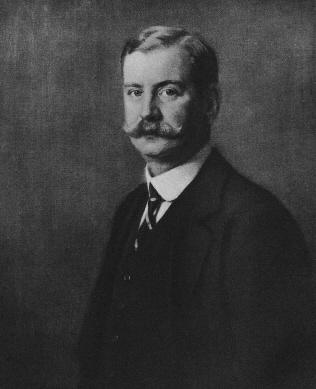Hugh S. Gladstone, M.A., F.Z.S., F.R.S.E., F.S.A.Scot
Obituary from Transactions, Series III, Vol. XXVII, pp. 222-3.
Every member of this Society must feel that a link with the past has been severed by the death of Sir Hugh Gladstone, who died at Capenoch on 5th April, 1949, after a long and distinguished career of public service. For 40 years he had been a member of the County Council, during the last 10 of which he had acted as Convener. For long he had been recognised as one of the country's most eminent ornithologists, and was widely known as an expert in the bibliography of British birds.
As a young man he published his "Birds of Dumfriesshire," which at once established his reputation as a brilliant field naturalist with an encyclopaedic knowledge of bird life. In 1920 he became chairman of the Wild Birds Advisory (Scotland) Committee, and for over 20 years served on the Council of the Zoological Society of London. During a long life he contributed many papers and articles to ornithological reviews, and brought together at Capenoch a magnificent library of books and pamphlets relating to British birds. In 1946 he was appointed Lord-Lieutenant of the County.
Sir Hugh became a member of this Society in 1905, and four years later was elected its President. At that date the Society was in low water. New methods and modern ideas were needed. His first duty was to find a new secretary and treasurer. His choice of Mr Shirley as secretary and Mr M'Kerrow (still happily with us) as treasurer provided the Society with the stimulus, enthusiasm, and drive so badly needed. A splendid working team, those three laid well and surely the foundations on which the Society now stands so firmly. One of Sir Hugh's most pressing tasks in those early days was to restore the finances of the Society. Life membership subscriptions had been used as income. He insisted that they should be treated as capital, and from his own pocket replaced to capital account the spent subscriptions. Working hand in hand with Mr Shirley, whose efforts had his unfailing support, he saw the Society reach its zenith in membership and financial stability, so that when the Museum was taken over from the Trustees by the Town Council the Society was able to devote the sum of £200 from its reserves to establish the Museum on up-to-date lines.
When, owing to failing health, Mr Shirley resigned the secretaryship in 1929, Sir Hugh decided to vacate the Presidency which he had held for 20 years, thus ending that great partnership to which this Society owes so much. But retirement from the Presidency did not end Sir Hugh's active connection with the Society. He still attended such meetings as he could, especially Council meetings, and in 1936 contributed an outstanding piece of work to our "Transactions" on "Thomas Watling, Limner of Dumfries," involving an immense amount of research work- a fitting finale to a membership of such remarkable attainment.
R.C.R.

